

European
Nuclear Society
e-news
issue 44: April 2014
Most of us, if we are honest, occasionally acknowledge a grudging admiration for some anti-nuclear activists. They devote their lives with undeniable industry and missionary zeal to the cause of ridding the world of nuclear power. They are driven by the unshakable conviction that their cause is just and in the wider interests of humanity. They are also very skilled at using emotional arguments to exploit people’s fears and anxieties, and at presenting their case as a cause. A good cause is more effective at harnessing emotions, claiming the moral high ground and persuading the undecided, than are more prosaic considerations like the security of supply, climate change and competitiveness credentials of nuclear energy. Attacking something is usually a more motivating and fulfilling experience than defending it.
Unfortunately, many anti-nuclear activists seem oblivious to the factual inaccuracies, ideological posturing and unscientific reasoning that so often underpin the anti-nuclear thesis. The battle lines are familiar: the strength of conviction politics and emotional manipulation on the one hand, and the force of factual and scientific reasoning on the other. But such a view is too simplistic. Experts in communications and public perception analysis have stressed the need for the nuclear community to accept that emotions are part of the vernacular of the human condition and to learn how to use them more efficiently if they want to convince the doubters. Emotional arguments mobilise the inactive. They engage the uncommitted. They help win the hearts and minds of citizens much more easily than do scientific facts. This is an uncomfortable truth. If we choose to ignore it, then we are helping to maintain the status quo and reinforcing the impression some people have that the nuclear community is remote and out of touch with the mainstream of human feelings and motivations.
Although we believe in nuclear energy with as much conviction as anti-nuclear activists oppose it, we don’t exhibit the missionary zeal that comes from having a sense of cause. Our limited experience of using emotion to reach out to people in support of our argument makes us appear passive and defensive. Some sceptics interpret defensiveness as indicative of something to hide. Modesty and restraint are over-rated virtues. We need to show greater self-assurance and conviction in the way we articulate the positive messages about nuclear; to appeal more to emotions when emphasising the vital contribution that it makes to quality of life and human health. It’s a case of being proactive, not reactive. The alternative is leaving the initiative with the anti-nuclear zealots.
Another way of influencing the dialogue more positively is to mobilise the power of third party advocacy. There are many well-known, much-respected people from all walks of life that are pro-nuclear or have become so after originally being against it. Some have always been resolute advocates, while others support it for more practical and pragmatic reasons. Because they are not members of the nuclear community and speak from a purely personal perspective, their voice is objective and credible. For example, world famous businessmen and entrepreneurs who have no personal involvement with or allegiance to the nuclear industry, like Bill Gates and Richard Branson, have strongly advocated the economic and environmental benefits of nuclear energy. As admired and often iconic celebrities they are listened to and their opinions carry weight. But perhaps the most striking of all advocates are the growing number of environmentalists who have changed from being anti-nuclear activists to nuclear proponents. Theirs was no sudden conversion; no damascene moment. Instead, having experienced reality and been confronted with the facts, they have revised their opinions and come to the conclusion that there is no energy future for the planet without nuclear. The recently released film Pandora’s Promise, the work of the American film director Robert Stone, traces just such a personal journey of discovery undertaken by five environmentalists. Among them is Mark Lynas, a former Greenpeace activist who used to campaign against nuclear energy but has since radically changed his point of view and has written a number of books underlining the important contribution that nuclear makes to the fight against climate change. They include the recently published Why a green future needs nuclear power.
Another example is the ecologist Patrick Moore, a former co-founder of Greenpeace. He was opposed to nuclear power in the 1970s when he believed that “nuclear energy was synonymous with nuclear holocaust" and that "everything nuclear was evil", but today he supports it. So too do other environmentalists such James Lovelock, author of the bestseller Gaia: A New Look at Life on Earth; Stewart Brand, the biologist and editor of the Whole Earth Catalogue, and Bishop Hugh Montefiore, a former Friends of the Earth trustee who was forced to resign his position after expressing his support for nuclear power. Clearly, it can’t be easy for environmentalists who were once against nuclear to come out and express their revised opinions in favour of it. It takes courage and conviction to recognise your past errors; an admission that makes their advocacy all the more credible and powerful. It also shows how intense personal engagement combined with a strong facts-based argument can present nuclear in a positive new light.
So, perhaps the nuclear community could do more to recognise the reasons for its opponents’ success and take a leaf out of their book by adapting a communications strategy based on a better understanding of the human psyche, greater self-confidence and a more proactive approach. It’s time to go on the offensive. It’s time to take the initiative away from anti-nuclear brigade. They are not going to hand it to us on a plate.
|
|
http://www.euronuclear.org/e-news/e-news-44/presidents-contribution.htm


|
At the European Nuclear Energy Forum (ENEF) in Prague, in May 2013, the European Commission presented long-term scenarios for the European energy mix. In some of these scenarios nuclear energy accounted for 20% of the EU’s electricity generation by 2050. This represents a decrease with respect to the 2011 level (28% of electricity generated by approximately 135 nuclear reactors in the 28 Member States), but it is still a substantial amount. By 2015, many of these reactors will have reached an operational age of over 30 years. If we want to keep to our target of generating 800 TWh of nuclear generation in 2050 we need to do 3 things: |
We need to extend the operation of at least 100 European nuclear reactors to more than 40 years within the time-frame of 2025-2045.
We must create the industrial capability to build 100 reactors in Europe for the period 2035-2055. That means the capability to put online 5 reactors per year in Europe during this period.
We must reduce, as far as reasonably practicable, the gap between the safety level of generation 2 reactors with an extended lifetime beyond 40 years and the safety level of generation 3 reactors, which will be used for European new build. One very important safety objective for nuclear reactors beyond 2020 is to prevent the occurrence of severe accidents and, should one ever occur, to avoid the long-term contamination of large territories.
The scientific and technical expertise of our 23 European member societies will be of great value to the accomplishment of these 3 objectives, in particular objectives 1 and 3. Without wishing to list all the possible contributions that we can make, allow me to provide readers with a few concrete examples: We can provide the expertise in material sciences required to understand the ageing processes and the lifetime limiting factors of reactor vessels and containment buildings. This is a field where many European laboratories have critical capabilities. They specialize in analyzing a variety of ageing processes affecting metallic parts, concrete structures and the dielectric and organic materials contained in cables and electric equipment used in replaceable and non-replaceable nuclear power plant components. Over 1000 scientists and research engineers collaborate within the European Energy Research Alliance (EERA), which is supported by the Member States and by the European Commission.
For objective 3, severe accident research - which is not a new field in Europe - has evolved significantly with the launching of new projects for Light Water Reactors. One topic concerns the comparison of two technical solutions used by Generation 3 reactors to manage the molten corium in the reactor containment: the so-called ‘in-vessel retention’ technique, which originated in America, and the ‘core catcher technique’ proposed by European and Russian designers.
Another technical topic concerns the analysis using specialised computer models of the severe accident sequences that affected the 3 Fukushima units and the stabilisation of the corium after partial erosion of the concrete basemat. These topics will be revisited with the availability of new data. our European nuclear societies and scientists can propose new ideas and contribute significantly to the research and to the industrial projects.
For objective 2, nuclear scientific societies have a different contribution to make: they can provide education, training and knowledge sharing resources for the next generation of operators, design and construction engineers, technicians and nuclear safety analysts.
But whatever form it might take, we expect an important contribution made by our nuclear societies to the future of long-term operation in Europe and to a general increase of the safety level of our nuclear reactors.
Noel Camarcat,
President of the European Nuclear Society
http://www.euronuclear.org/e-news/e-news-44/RRFM2014.htm


The annual RRFM (Research Reactor Fuel Management) conference took place this year in Ljubljana, the capital city of Slovenia, from 30 March to 3 April 2014. This flagship ENS technical conference brought together around 200 specialists in the field of nuclear research reactors to discuss a range of topics, including the fuel cycle of research reactors; safety and security priorities; the utilisation, operation and management of the reactors, new research reactor projects and the latest innovations related to reactor physics and thermo-hydraulics.
The wide-ranging RRFM 2014 programme featured many presentations given by experts in their respective fields, numerous highly focused debates, networking opportunities and a number of technical visits offered to delegates. In addition, as always, the conference provided a rich source of excellent technical papers, with over 120 published. There are too many of them to mention here, but ENS NEWS readers can consult them via the following link: www.rrfm2014.org
However, I would like mention one paper in particular, the one that was awarded the RRFM 2014 Poster Prize. It was a paper written by threee researchers from France and was entitled: Insights on the kinetics and mechanism behaviours of layer formation in UAl2-Al diffusion couple.
And here it is…….
(Editor-in-Chief)
C. MOUSSA, O. TOUGAIT.
Institut des Sciences Chimiques de Rennes, UMR-CNRS 6226, Université de Rennes 1, Campus de Beaulieu, F-35042 Rennes Cedex -France
B. STEPNIK
AREVA-CERCA, 10 Rue Juliette Récamier, 69006 Lyon-France
UAlx irradiation targets are produced by the thermal reaction between UAl2 and Al powders. With this respect, the understanding of diffusion mechanism in the UAl2/Al system is of interest. The present study aims to experimentally evaluate some fundamental features of the growing of the interaction product between UAl2 and Al by means of diffusion couples experiments. The diffusion couples were prepared using as-cast UAl2 and pure aluminum in the form of a tri-layer sandwich that was cold worked at 190(10)MPa in a die. The UAl2-Al interfaces were investigated by SEM-EDS analysis, after heating the couples in a temperature range 575-645°C for dwell periods up to 70 hours. The growth rate of the interaction layer, that is function of time and temperature, is also influenced by the applied pressure. The major interaction phase, UAl3, forms in the diffusion zone with planar morphology whereas for longer annealing times and at higher temperatures UAl4 forms preferentially at the vicinity of both the open pores and cracks of the sample. In terms of mechanism, it can be proposed that the interdiffusion reactions occur in two separate steps (i) formation of UAl3 from the reaction between UAl2 and Al, (ii) formation of UAl4 from the reaction between UAl3 and Al. The formation of UAl3 as the first phase was tentatively described according to the normal parabolic behavior of the layer thickening. However, the large dispersion of the data points hindered to evaluate a reliable value of the activation energy.
http://www.euronuclear.org/e-news/e-news-44/ENC2014.htm


|
|
||
ENC 2014 Conference Secretariat
ENC 2014 Gold Sponsor
Sponsor of the Welcome Reception

http://www.euronuclear.org/e-news/e-news-44/TopFuel2015.htm


TopFuel is an annual topical meeting of nuclear fuel experts from around the world. It is the occasion to discuss the challenges facing the developers and manufacturers of new high-performance nuclear fuels – fuels that will help meet current and future energy demand and reduce man’s over dependence upon CO2-emitting fossil fuels.
TopFuel 2015 will take place from 13 – 17 September 2015 in Zurich, Switzerland.
Switzerland is known for highest burn-ups and high-quality NPP operation as well as cutting edge fuel investigations – from hotlab to synchrotron investigations. TopFuel delegates will have the opportunity to visit some of the most interesting Swiss nuclear sites.
|
Organised in cooperation with: |
|||
|
|||
http://www.euronuclear.org/e-news/e-news-44/sne-news.htm


This year, true to tradition, the SNE organized its winter symposium, which was entitled Nuclear Power Plants in 2013: Experiences and Perspectives. The seminar offered Spanish nuclear industry representatives the opportunity to discuss, together with university teachers and students, issues relating to nuclear power plant operation in 2013 and to the future of the nuclear industry.

The Nuclear España Best Article Prize was awarded this year by SNE’s Editorial Committee to Almudena Real and Beatriz Robles for their paper entitled Radiological protection of the environment: evolution and prospects. The Editorial Committee also gave an Honorific Mention to the magazine edition entitled International nuclear market.

A ‘Special Mention’ was also made to mark the 25th Anniversary of the Vandellos II and Trillo NPPs.

The SNE Ordinary General Assembly took place immediately after the seminar.
The 40th Annual Meeting will be held from 1-3 October of 2014 in the city of Valencia, hosted by Iberdrola. All relevant information about the meeting is available at: www.reunionanualsne.es.
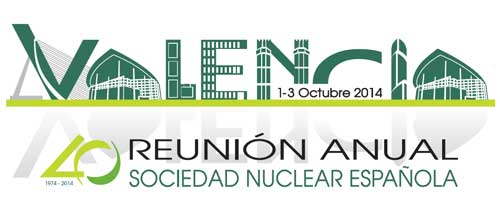
Regarding the activities of the Young Generation network, Jóvenes Nucleares, it is worth highlighting that the next International Youth Nuclear Congress (IYNC) will take place in Burgos (Spain) from 6-12 July 2014.
The Terminology Committee, whose mission is to define with maximum accuracy the Spanish vocabulary that is used in the fields of nuclear energy, technology and management sciences, has updated 74 nuclear terms in the glossary that features on the SNE’s website: www.sne.es. The glossary now contains a total of 1050 nuclear words, which are provided together with their French and English equivalents.
The major contribution of Spanish NPPs to Spain’s total energy production
The contribution made by Spanish NPPs in 2013 to Spain’s national electricity production was equivalent to19,8% of the total consumption. Nuclear generation was the largest generation source in Spain, followed by wind (19.3%), coal (14.7%), cogeneration (12.1%), hydraulic (11.8%), gas combined cycle (10%), other renewables (9.9%), and fuel (2.4%).
http://www.euronuclear.org/e-news/e-news-44/hungary.htm

In January 2014, an agreement was signed between the Russian and Hungarian governments on the building of two new units at the Paks NPP. The new reactors will be of the AES-2006 design, with each one producing 1200 MW of electrical power. Following this high-level decision the technical details will be agreed by a group of experts.
The Hungarian Nuclear Society organized a seminar on the technical aspects of extending Paks NPP with two new units. More than 200 people registered for the seminar, which was held on 20 March 2014, in Budapest. The lectures given during the seminar covered the following topics:
- the development of VVER reactors
- the safety system of the new units
- the licensing process
- perspectives for domestic electricity production
- human resources needs for building and operating the new units
- the fuel for VVER reactors
- the handling of ‘beyond design basis’ accidents
The presentations were given by leading experts from Paks NPP, the Hungarian Atomic Energy Authority, the Budapest University of Technology and Economics and the MTA Centre for Energy Research.
The objective of the seminar was to provide Hungarian professionals with the basic required technical information about the new reactors. It was emphasised that the building of the new reactors will need the involvement of many Hungarian experts in answering scientific questions and identifying technical solutions.
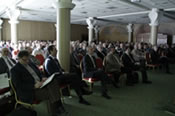 |
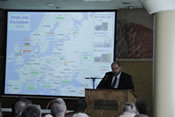 |
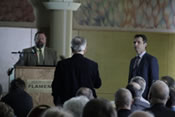 |
http://www.euronuclear.org/e-news/e-news-44/slovakia.htm

'International Water Day', 23 March, is a day celebrated by hydrologists around the world, and 24 March is the ‘Day of Meteorologists.’ This fortunate coincidence provides an annual opportunity for us at the Slovak Hydro-meteorological Institute to open our gates to the general public. And, vice-versa, for the public it provides an opportunity to meet those people who research and present information about various environmental phenomena.
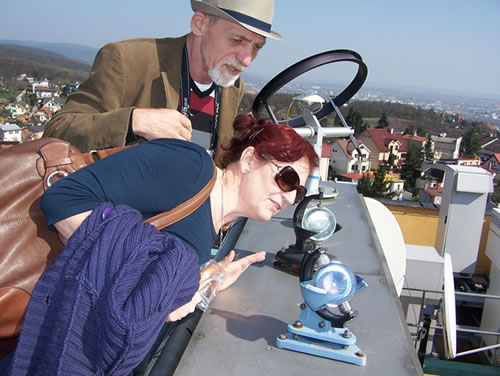
On March 22 this year, almost 3,000 curious visitors made the most of this unique opportunity. And it was well worth their effort. They received a lot of information from the various work stations at the Slovak Hydro-meteorological Institute and took part in practical exercises. These exercises asked fundamental questions and illustrated perfectly the great diversity of the Institute’s activities:
Weather forecasts: How a weather forecast is created? What models are used and how does a supercomputer help with the calculations? Why do we watch the weather so closely? For who are the forecasts issued? How are they made suitable for TV broadcasting?
Hydrological forecasts: How do we know when a flood is imminent? What does it mean when a flood alert is issued? What does the Institute do during a flood? Why is the water content in snow measured? What is special about flood forecasting?
Meteorological services: These include: Climatological and meteorological observation networks; the processing and analysis of measurements; the Earth’s climatic system; national monitoring networks for assessing atmospheric quality; smog alert systems; the National Emissions Information System, which includes the recording of greenhouse gas emissions; radiation monitoring.
Hydrological services. These include information on the following: How water levels in rivers and creeks are measured. How the amount of underground water is measured. The country’s hydrological network. Available sources of drinking water. Data on water quality. What wildlife lives in our rivers?
Laboratory experimentation. The chemical and physical analyses of atmospheric samples and precipitation.
Although radiation monitoring is only one of the many interesting activities carried out at the Institute, during the Open Door Day it was one of the most visited work stations. Its history began back in 1963, when the department for monitoring of atmospheric radioactivity due to nuclear tests was established. At present, the system is one part of the State’s system of environmental monitoring and also serves as a means of providing timely warning against high radiation levels. The system contributes to the European Union’s Radiation Data Exchange Platform (EURDEP), and bilateral exchange of information with neighbouring countries – Hungary, Austria and the Czech Republic – goes on as well.
Visitors, however, did not limit their interest solely to radiation monitoring carried out by meteorological measurement stations, but also showed great interest in broader scenarios and discussed a range of issues associated with ionizing radiation. These included topics such as nuclear power plants and their safety, how to get energy from other sources and their respective environmental impacts, and radiation exposure from medical applications. But the most frequently questioned issue was that of radon in the environment and in the home, as well as possible ways of reducing it.
Visitors during the Open Door Day also appreciated the open and transparent approach of the Institute’s experts, who were able to inform them about their work in an interesting way, combining enthusiasm with a high level of expertise.
Tereza Melicherová
An expert in radiation monitoring at the Slovak Hydro-meteorological Institute in Bratislava, and a member of the Slovak Nuclear Society.
http://www.euronuclear.org/e-news/e-news-44/IYNC-2014.htm

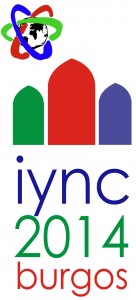
The registration for IYNC 2014 is now open !!!
www.iync.org/iync2014/registrations/
with the early bird special rate applicable until the 1st of May
Conference participation benefits include:
IYNC Games
Welcome Reception Dinner
Cultural events: Visit to winery, cathedral visit and “tapas” route
Farewell Dinner at “Coco-Atapuerca” Restaurant
Technical Tour (option to choose one)
ENSA Manufacturing Facility for large nuclear components
Juzbado Fuel Manufacturing Facility
Garoña Nuclear Power Plant
Tecnatomsimulators and facilities
José de Cabrera NPP
Trillo NPP
Ciemat investigation center with stellarator (TJ-II)
Access to all IYNC 2014 session and proceedings materials.
Conference technical tracks:
Operation and Maintenance, Design Modifications, Radiation Protection
Generation 3 Reactors and SMRs
Reactor Physics and Materials (including Advanced Reactors, e.g. Gen IV)
Thermal-hydraulics
Neutronics
Materials
Safety, PRA, Severe Accidents and Fukushima
Fuel Cycle Front-end and Non-Proliferation
Decommissioning, Fuel Cycle Back-end and Waste Management
Fusion
Training, Human Resources and Human Factors
Politics and Economics, Social Acceptance
Medicine and Other applications
YGN Best Practices
Participants in IYNC 2014 will have the opportunity to exchange knowledge and experience with key-note speakers such as Dr. Moon-He Chang, South Korea, South-Korean Nuclear Society President and KAERI Vice-President, Mr. Mike Weightman, UK, former ONR HM Chief Inspector, head of first IAEA mission to Fukushima, Mr. Ken Ellis, Canada, WANO Managing Director, Dr. Shunsuke Kondo, Japan, Chairman of the Japanese Atomic Energy Commission (AEC), Dr. Ralf Güldner, Germany, CEO E.ON Kernkraft GmbH, Mr. Danny Roderick, USA, Westinghouse CEO & President, Mr. Alejo Vidal-Quadras, Spain, European Parliament Vice-President, Mr. George Beveridge, UK, Sellafield Deputy Managing Director, Mr. Don Hoffman, USA, ANS Chairman.
In addition 3 plenary, 5 panel sessions, 15 interactive unique workshops and 4 media training session will be organized.
Plenary Sessions:
Nuclear Safety
Training, Education & Leadership
Energy & Nuclear Power Development
Panel Sessions:
Decommissioning & Waste Management
Non-Proliferation
New Energy Markets
Nuclear Communication in the 21st Century: Emerging Trends & Changes
R&D Landscape for New Nuclear Systems
Workshops:
New Build or Refurbishment?
Nuclear Science and Nanotechnology
Nuclear Energy Sustainability
Fuel Cycle Game
Thorium Reactors and the Next Nuclear Fuel
Small Nuclear Power Reactors
Fusion: A 50 Year Story
Balancing Nuclear Power’s Global Expansion with Proliferation Prevention
Women Going Critical in Nuclear (Interact with Female Leaders from Around the orld)
Nuclear Waste Challenges and Your Solutions
Tools to Use in Your Local YGN
Will Nuclear Kill Cancer?
Starting New Ventures in Nuclear/Nuclear and Entrepreneurship
The Trouble with Justification: Societal Opinions of Nuclear Acceptability
Knowledge Transfer Between Generations
Media training sessions:
Are we communicating or are we managing a complex interactive process ?
How do we deal with media in a broad organization context ?
Why do people have the wrong risk perceptions, and how do we address them ?
How do we communicate when things are going wrong ?
Additionally:
Keynote session
Special Fukushima session: 3 years from Fukushima Daiichi Nuclear Accident – Reality, Challenges and Future (presented by the Japanese Young Professionals)
2014 ENEN PhD Event
Pandora’s Promise movie
We would like to invite our followers to keep up to date with IYNC network and conference, by visiting our website at www.iync.org.
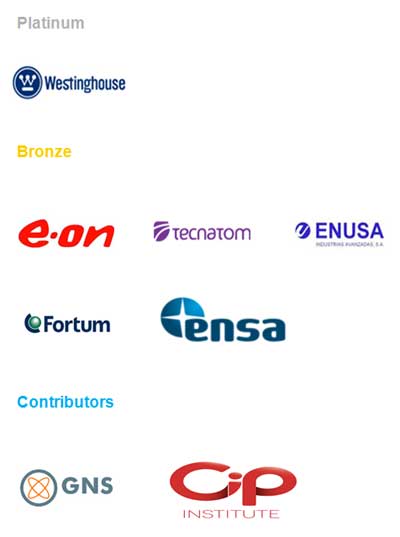
http://www.euronuclear.org/e-news/e-news-44/french-ygn.htm



Following the success of Atoms for the Future 2013 conference that brought to France more than 250 young professionals from all over the world (USA, UK, Germany, Poland, France, etc.), the SFEN Young Generation (SFEN/JG) is now preparing the fifth edition of the event. Atoms for the Future 2014 will be dedicated to the topics of Design, Licensing and Construction of Nuclear Power Plants (NPPs) and will take place in France from 13 – 16 October 2014.
As usual, the event will consist of 2 days of high-level conference debates and 2 days of technical tours. The aims of the event are to make participants better informed about the process that leads to the construction of new NPPs and to encourage networking among nuclear young professionals of the sector. All these activities take place in a dynamic and friendly atmosphere.
The first day of the conference will give the opportunity to attendees to understand more about licensing, societal issues, economics, law and strategic topics related to NPP projects. The second day will be more focused on technical aspects, with the spotlight on topics such as the supply chain, civil engineering, design, etc.
The programme of lectures is available on our website (www.sfenjg.org/Atoms-for-the-Future-2014), and features the confirmed participation of top-level speakers, such as:
Dominique Minière (EDF Senior Vice President, Deputy Chief Operating Officer, SFEN President)
Philippe Knoche (AREVA Chief Operating Officer, Member of the Executive Board)
Christophe Béhar (Director of the Nuclear Energy Division, CEA).
Key French nuclear sites have been selected for the visits programme to provide a representative illustration of the 2014 conference’s main theme. We are pleased to confirm the visits of the following facilities:
The Creusot Forge and Mécanique factory specialized in the supply of big forgings and castings destined mainly for the nuclear market
The Chalon/Saint-Marcel plant, where the key components of nuclear reactors made at the Creusot factory are assembled
Participants in Atoms for the Future 2014 will have the opportunity to visit the 1st World Nuclear Exhibition (WNE) for free. WNE will take place at the Paris-Le Bourget Exhibition Centre from 14 - 16 October 2014. To find out more about the WNE visit: www.world-nuclear-exhibition.com/
Website: www.sfenjg.org/Atoms-for-the-Future-2014
For more information on the event and registration: atomsforthefuture@sfenjg.org
----------------
Our colleagues from SFEN/JG also recently carried out the following interview with Christophe Xerri, a representative of the French Embassy in Tokyo, a text that ENS NEWS is delighted to share with its readers (Editor-in-Chief).
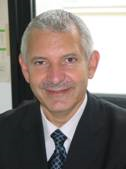 |
1. What is the role of the nuclear unit in French embassies?France appoints a nuclear counsellor to its embassies in countries which have already running nuclear plants and those which are interested in nuclear energy: USA, China, Russia, UK, Finland, India, Japan, etc.
|
The mission of a Nuclear Counsellor consists in representing the French administration: supporting cooperation projects, facilitating exchange of information as regards nuclear energy between France and the host country, and thus promoting benchmarking.
Historically, the Nuclear Advisor is linked both to the French Administration and to the CEA (French organisation dedicated to R&D in nuclear and alternative energies). This may seem quite dubious, because the nuclear advisor is then representing both the State and a specific organisation, but that is also the case for foreign nuclear advisors, so at least it is consistent with international practices in terms of nuclear cooperation.
Usually, Nuclear Counsellors worked for CEA, particularly at the International Relations Department and had already contacts with the host country. Yet my carrier is not a classic one.
First, I had worked for a long time for COGEMA which became later AREVA, and also had been in relation with safety authorities. The Nuclear Counsellor in the French Embassy in Tokyo was to be replaced in 2011. Because of the Fukushima accident, they needed a special profile, someone who would be operational immediately. At that time, I was working in the Japanese industry, I spoke Japanese and I could understand the environmental, technical and political stakes of Fukushima accident. I was in the right place at the right moment.
The situation is stabilised: core and pool cooling are ensured, radioactivity dose rate is decreasing thanks to cleaning of the area, and buildings are getting dismantled.
As regards spent fuel of plant n°4, operations to take away the spent fuel from the pool are on time and on schedule; this will take one year.
Things are now better as it comes to management of water tanks and leaks.
There is still one concern on this topic: water comes down from the nearby mountains and flows in the basement of the buildings: everyday, between 300 and 400 m3 of water are drained, sent to Caesium-filters and then to tanks, where other radionuclides will be filtered.
After operations of decontamination, there is still tritium in the water. Regarding health and environment protection matters, the level of toxicity is low enough for it to be released in the sea: indeed it would be rapidly diluted, and would not increase significantly the natural level of radioactivity.
However, a commitment to the local population has been taken not to release any radioactive material in the sea. This leads to look for other solutions, like separation and apart-storage of tritium event if such experimental technologies are not available for large amounts of water today.
Withdrawing melted core is a complex task because of the localisation of the corium (inside and outside the reactor vessels), its high radioactivity, its potential reaction with the structures around: metal, concrete, etc. Lots of actions are conducted today to assess the best method: numeric simulations are run, cameras are sent to analyse the situation inside the reactors, and even, real nuclear fuel melt experiments are carried out – at a smaller scale of course – to help better understand the behaviour of the coriums of Fukushima.
The withdrawing of the coriums (called “fuel debris” in Japan) should not start before 2020.
Before Fukushima accident, the nuclear power stood for 25-30% of the electricity production. When nuclear plants were shutdown just after the accident, different sources were used to replace this power.
For the most part, gas stations have been settled: indeed, they are quite fast to build and operate. Some coal stations are also being built and the one damaged by the tsunami repaired. The rest of the power has been replaced by using existing power margins: indeed, before the accident, some fossil fuel plants were not operating at full power and full time. After the accident, they were simply asked to produce more power more often. Some power stations which were supposed to have been stopped for good were even brought back to operation. These power reserves were especially high because the electricity network in Japan has limited connections between regions.
Avoidance of CO2 has clearly not been on the agenda for replacement of nuclear stations. First, there is expectation to restart them in the coming months. And actually in Japan, CO2is not that much of a concern compared to Europe. The government rather insists on energy savings and energy efficiency, i.e. the economic and technical aspect of this matter.
Before Fukushima, people in Japan generally had a rational approach to nuclear energy and were rather in favour of it.
Now that Japan does not use anymore nuclear power, they don’t see a dramatic increase in their electricity bill and there are no blackouts. Furthermore, the government ensures that Japan’s competitiveness has been restored through a weaker yen and a stimulus package – which is not strictly true economically speaking in the long run but is believed by the citizens.
In a word, stopping nuclear power stations has not had such an impact on Japanese everyday life and people are generally not in favour of restarting nuclear power plants. As regards populations living next to nuclear power stations, those who live near PWRs are rather in favour of resuming operation, whereas those who live next to BWRs, the same type as reactors of Fukushima, are rather more cautious.
Eventually, some people in the majority of the Japanese Parliament do not support nuclear power as they used to; they question the very necessity of nuclear power. The Prime Minister is still in favour of it but he must act carefully.
There were a lot of upgrades in the structures, in regulation and also in state of minds.
Works have been carried out on the existing stations and are still ongoing for some of them: they include a higher wall against tsunamis, filtered venting, hydrogen recombiners, lorries carrying power supply, reinforced fire prevention and additional watertight doors.
Before Fukushima, the Japanese way of working assumed strong regulatory prescriptions: regulation was supposed to supply with a comprehensive roadmap telling exactly to designers and operators the actions to be performed and materials to be used for construction, licensing and operation. This takes probably a part in the accident of Fukushima: improvement and technology upgrade is paced down by regulation placing emphasis on “already well-proven concepts”.
However, this aspect is beginning to change in the nuclear field in Japan. Indeed, the regulation approach is getting switched from a prescription basis to an evaluation basis. The safety authority which was founded in November 2012 has been acknowledged as an independent structure by the Japanese population. Norms for both tsunami and seism are getting updated. Severe Accidents used to be excluded from the scope of regulation: they were simply assumed not to occur and actions of the operators were “voluntary”. Now they are included.
Furthermore, an association of Japanese nuclear operators, called Jansi, is being created. The ambition is to make of it a Japanese equivalent of the American INPO, i.e. a structure where operators organise Peer Reviews, evaluations, inspections, identify domestic and international best practice, give advice and recommendations one for another. Japanese nuclear operators are now convinced that it is necessary to overtake regulation and to make the best of international practices, which is a significant evolution of the institutions.
All the three power stations which were under construction before Fukushima will be completed and started.
The fuel recycling policy is maintained. The fuel recycling facility, which is also shutdown for the moment, is under studies: depending on the new seismic norm to be assessed for it, the facility will be able to be restarted within 18 months, or later after additional works.
Regarding the restart of nuclear power plants, 12 proposals have been submitted in summer 2013 and 6 other since then. The current consensus is that 6 could be actually restarted before summer 2014, and 4 to 6 later on.
The global picture for nuclear power plants is the following: there were 54 power plants running before Fukushima. 4 of the 6 Fukushima reactors are lost due to the accident, and the 2 others are considered lost, as being on the same site.
In the remaining 48 stations, roughly speaking one third is assessed to be worth the upgrade works and will be restarted; one third is probably too old to be worth the upgrades works. The last part deserves a finer analysis and will eventually be dispatched in the two first categories.
For the moment, it is estimated that plants which will not be restarted account for a third of the total nuclear nominal power. Since the affected plants are the oldest, with the smallest individual nominal powers, they account for a little more than 16 plants.
What will replace eventually this capacity? Gas power plants, renewable energies, and energy savings, or even new nuclear power stations: for the moment the agenda is to restart existing plants, and the next step will come later on.
The first role of the embassy is to inform France about the situation, and Japan about technological options available. The embassy supports industrial issues in which the State takes a role, like some decisions about work frame for examples. Currently, there are only Japanese on the site of Fukushima. One of the typical topics that the embassy can handle is that of the role foreign companies can take there. This is a role of facilitator for integration of technology and know-how, to be then implemented by local Japanese people: actually this is an issue even between Japanese companies which are not used to work together.
The role of the embassy and of foreign organizations in the field is, fortunately, not essential for nuclear safety, it is rather a matter of work efficiency.
Restart of nuclear power stations in Japan will increase the service market in Japan and allow resuming existing contracts in both front-end and back-end. TEPCO asked for international technical advisors, among which there is currently a Frenchman. France will readily help Japan for any critical aspects of the operation restarts and fuel cycle industry.
Furthermore, there is also renewed and stronger collaboration in the field of fast-neutron reactors and between French and Japanese safety authorities.
Moreover, there is one project which is particularly interesting: ATMEA1, a reactor which is designed jointly by AREVA and Mitsubishi Heavy Industries. It can be noted that it is the only project led by a partnership between Japan and another country. It is really a project to follow.
France appoints a nuclear counsellor to its embassies in countries which have already running nuclear plants and those which are interested in nuclear energy: USA, China, Russia, UK, Finland, India, Japan, etc.
The mission of a Nuclear Counsellor consists in representing the French administration: supporting cooperation projects, facilitating exchange of information as regards nuclear energy between France and the host country, and thus promoting benchmarking.
Historically, the Nuclear Advisor is linked both to the French Administration and to the CEA (French organisation dedicated to R&D in nuclear and alternative energies). This may seem quite dubious, because the nuclear advisor is then representing both the State and a specific organisation, but that is also the case for foreign nuclear advisors, so at least it is consistent with international practices in terms of nuclear cooperation.
Usually, Nuclear Counsellors worked for CEA, particularly at the International Relations Department and had already contacts with the host country. Yet my carrier is not a classic one.
First, I had worked for a long time for COGEMA which became later AREVA, and also had been in relation with safety authorities. The Nuclear Counsellor in the French Embassy in Tokyo was to be replaced in 2011. Because of the Fukushima accident, they needed a special profile, someone who would be operational immediately. At that time, I was working in the Japanese industry, I spoke Japanese and I could understand the environmental, technical and political stakes of Fukushima accident. I was in the right place at the right moment.
The situation is stabilised: core and pool cooling are ensured, radioactivity dose rate is decreasing thanks to cleaning of the area, and buildings are getting dismantled.
As regards spent fuel of plant n°4, operations to take away the spent fuel from the pool are on time and on schedule; this will take one year.
Things are now better as it comes to management of water tanks and leaks.
There is still one concern on this topic: water comes down from the nearby mountains and flows in the basement of the buildings: everyday, between 300 and 400 m3 of water are drained, sent to Cesium-filters and then to tanks, where other radionuclides will be filtered.
After operations of decontamination, there is still tritium in the water. Regarding health and environment protection matters, the level of toxicity is low enough for it to be released in the sea: indeed it would be rapidly diluted, and would not increase significantly the natural level of radioactivity.
However, a commitment to the local population has been taken not to release any radioactive material in the sea. This leads to look for other solutions, like separation and apart-storage of tritium event if such experimental technologies are not available for large amounts of water today.
Withdrawing melted core is a complex task because of the localisation of the corium (inside and outside the reactor vessels), its high radioactivity, its potential reaction with the structures around: metal, concrete, etc. Lots of actions are conducted today to assess the best method: numeric simulations are run, cameras are sent to analyse the situation inside the reactors, and even, real nuclear fuel melt experiments are carried out – at a smaller scale of course – to help better understand the behaviour of the coriums of Fukushima.
The withdrawing of the coriums (called “fuel debris” in Japan) should not start before 2020.
Before Fukushima accident, the nuclear power stood for 25-30% of the electricity production. When nuclear plants were shutdown just after the accident, different sources were used to replace this power.
For the most part, gas stations have been settled: indeed, they are quite fast to build and operate. Some coal stations are also being built and the one damaged by the tsunami repaired. The rest of the power has been replaced by using existing power margins: indeed, before the accident, some fossil fuel plants were not operating at full power and full time. After the accident, they were simply asked to produce more power more often. Some power stations which were supposed to have been stopped for good were even brought back to operation. These power reserves were especially high because the electricity network in Japan has limited connections between regions.
Avoidance of CO2 has clearly not been on the agenda for replacement of nuclear stations. First, there is expectation to restart them in the coming months. And actually in Japan, CO2 is not that much of a concern compared to Europe. The government rather insists on energy savings and energy efficiency, i.e. the economical and technical aspect of this matter.
Before Fukushima, people in Japan generally had a rational approach to nuclear energy and were rather in favour of it.
Now that Japan does not use anymore nuclear power, they don’t see a dramatic increase in their electricity bill and there are no blackouts. Furthermore, the government ensures that Japan’s competitiveness has been restored through a weaker yen and a stimulus package – which is not strictly true economically speaking in the long run but is believed by the citizens.
In a word, stopping nuclear power stations has not had such an impact on Japanese everyday life and people are generally not in favour of restarting nuclear power plants. As regards populations living next to nuclear power stations, those who live near PWRs are rather in favour of resuming operation, whereas those who live next to BWRs, the same type as reactors of Fukushima, are rather more cautious.
Eventually, some people in the majority of the Japanese Parliament do not support nuclear power as they used to; they question the very necessity of nuclear power. The Prime Minister is still in favour of it but he must act carefully.
There were a lot of upgrades in the structures, in regulation and also in state of minds.
Works have been carried out on the existing stations and are still ongoing for some of them: they include a higher wall against tsunamis, filtered venting, hydrogen recombiners, lorries carrying power supply, reinforced fire prevention and additional watertight doors.
Before Fukushima, the Japanese way of working assumed strong regulatory prescriptions: regulation was supposed to supply with a comprehensive roadmap telling exactly to designers and operators the actions to be performed and materials to be used for construction, licensing and operation. This takes probably a part in the accident of Fukushima: improvement and technology upgrade is paced down by regulation placing emphasis on “already well-proven concepts”.
However, this aspect is beginning to change in the nuclear field in Japan. Indeed, the regulation approach is getting switched from a prescription basis to an evaluation basis. The safety authority which was founded in November 2012 has been acknowledged as an independent structure by the Japanese population. Norms for both tsunami and seism are getting updated. Severe Accidents used to be excluded from the scope of regulation: they were simply assumed not to occur and actions of the operators were “voluntary”. Now they are included.
Furthermore, an association of Japanese nuclear operators, called Jansi, is being created. The ambition is to make of it a Japanese equivalent of the American INPO, i.e. a structure where operators organise Peer Reviews, evaluations, inspections, identify domestic and international best practice, give advice and recommendations one for another. Japanese nuclear operators are now convinced that it is necessary to overtake regulation and to make the best of international practices, which is a significant evolution of the institutions.
All the three power stations which were under construction before Fukushima will be completed and started.
The fuel recycling policy is maintained. The fuel recycling facility, which is also shutdown for the moment, is under studies: depending on the new seismic norm to be assessed for it, the facility will be able to be restarted within 18 months, or later after additional works.
Regarding the restart of nuclear power plants, 12 proposals have been submitted in summer 2013 and 6 other since then. The current consensus is that 6 could be actually restarted before summer 2014, and 4 to 6 later on.
The global picture for nuclear power plants is the following: there were 54 power plants running before Fukushima. 4 of the 6 Fukushima reactors are lost due to the accident, and the 2 others are considered lost, as being on the same site.
In the remaining 48 stations, roughly speaking one third is assessed to be worth the upgrade works and will be restarted; one third is probably too old to be worth the upgrades works. The last part deserves a finer analysis and will eventually be dispatched in the two first categories.
For the moment, it is estimated that plants which will not be restarted account for a third of the total nuclear nominal power. Since the affected plants are the oldest, with the smallest individual nominal powers, they account for a little more than 16 plants.
What will replace eventually this capacity? Gas power plants, renewable energies, and energy savings, or even new nuclear power stations: for the moment the agenda is to restart existing plants, and the next step will come later on.
The first role of the embassy is to inform France about the situation, and Japan about technological options available. The embassy supports industrial issues in which the State takes a role, like some decisions about work frame for examples. Currently, there are only Japanese on the site of Fukushima. One of the typical topics that the embassy can handle is that of the role foreign companies can take there. This is a role of facilitator for integration of technology and know-how, to be then implemented by local Japanese people: actually this is an issue even between Japanese companies which are not used to work together.
The role of the embassy and of foreign organizations in the field is, fortunately, not essential for nuclear safety, it is rather a matter of work efficiency.
Restart of nuclear power stations in Japan will increase the service market in Japan and allow resuming existing contracts in both front-end and back-end. TEPCO asked for international technical advisors, among which there is currently a Frenchman. France will readily help Japan for any critical aspects of the operation restarts and fuel cycle industry.
Furthermore, there is also renewed and stronger collaboration in the field of fast-neutron reactors and between French and Japanese safety authorities.
Moreover, there is one project which is particularly interesting: ATMEA1, a reactor which is designed jointly by AREVA and Mitsubishi Heavy Industries. It can be noted that it is the only project led by a partnership between Japan and another country. It is really a project to follow.
http://www.euronuclear.org/e-news/e-news-44/saphymo.htm


In 2010, the first stage of the Automated Measuring System for Industrial and Ecological Monitoring (AMSIEM) at the JSC Production Association electrochemical plant, in Zelenogorsk, Russia, was finalized. The company is active in the nuclear fuel cycle and is part of the Russian corporation TVEL. The new ecological monitoring system verifies radiation levels, as well as chemical and meteorological parameters. The aim is to survey both the working areas of the plant and areas within the plant’s perimeter. At the official opening 27 measurement channels fixed to 22 stationary posts at key locations inside the plant began monitoring. Eventually, AMSIEM will monitor the ecological environment around the plant with more than 60 stationary posts. All the data are collected, archived, processed, and visualised for the convenience of end users, and shared with the local ministry responsible for managing emergency situations.
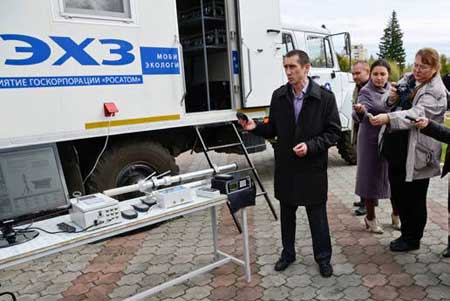
Using patented SkyLINK radio technology for wide-area monitoring, which was developed by Saphymo (Germany), this system has proven reliability performance; performance that includes different subsystems. The SkyLINK transmitters fixed to stationary posts are unique in many ways - most notably with regards to their power output (just 10 mW, which is enough to send data up to 100 km).The complete system integrates the local subsystems into a more powerful consolidated AMSIEM, which has one analytical centre. One important subsystem of the AMSIEM is the control of the chemical environment. It allows measurement of the concentration of toxic gases, such as NH3, HF, SO2, and NO2. All sensors have been integrated via the Universal Telemetry Platform, with battery back-up within the surveillance system.
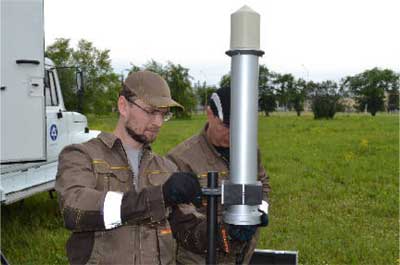
Another AMSIEM subsystem called ‘Automated System for Radiation Situation Control’ consists of 13 autonomously operating GammaTRACER radio probes that are used as stationary posts for γ-dose rate surveillance, together with a hand-held MiniTRACE radio dose rate meter. The system has been upgraded since May 2012.
In 2013, a car-based Mobile Complex of Emergency Response (MCER) based on the mobile ShortLINK radio system was integrated into the AMSIEM, comprising of radiation and mobile chemical sensors. This MCER can be used to meet the needs of the whole region, covering a transmission distance of up to 5 km. Installation and maintenance is performed together by technical specialists of Soyuzatompribor, in Moscow.
The AMSIEM’s functionality can easily be expanded. It can also integrate new types of measuring instruments, such as the new spectrometric SpectroTRACER probe for air, soil and water, which uses the ShortLINK or SkyLINK channel as a back-up, principally operating via LAN, WIFI, GPRS or satellite. Integration of air particulate monitors, iodine and others also demonstrates the system’s performance. The different ecological initiatives launched at the Zelenogorsk Electrochemical Plant were presented to ROSATOM in September 2013. They offer a model platform for the measurement of other potentially dangerous substaces in the Krasnoyarsk Region and will become part of the regional AMSIEM (RAMSIEM).
Saphymo has set up many other automated networks worldwide. Get in touch with us for help with your measurement project!
http://www.euronuclear.org/e-news/e-news-44/linn.htm


VMK-135-Vac-Sonder
Linn High Therm, leading manufacturer of industrial and lab furnaces since 1969, presents:
Fast laboratory furnaces VMK (up to 1800 °C), VMK-S/Vac (up to 1200 °C) for brazing, annealing, ashing, tempering, sintering, reducing, pyrolysis etc.
Stainless steel housing for corrosive environment, easy operation, fast heating- and cooling cycles are special features of these series. Fiber insulation is used for lab- and high temperature furnaces (VMK); a heat resistant gas-tight muffle insert (1.4841/Inconel) and a water cooled door flange enable protective gas- and or vacuum operation (VMK-Vac) in case of protective gas/vacuum furnaces (VMK-S).
Linn standard laboratory furnaces are available in sizes 1 – 25 l, 0,6 – 5,0 kW.
A wide range of options offers many customer specific solutions, e.g. vacuum operation 10-5 mbar with 1100 °C in case of the illustrated special version.
Furthermore possible: after burning, gas feeding, burning-off device and flame supervision, safety package for H2-operation, gas ventilation, fast cooling, gas re-cooling, cooling trap in gas outlet.

http://www.euronuclear.org/e-news/e-news-44/sck-cen.htm

In the presence of members of the Campine Fire Brigade Zone and of a number of company fire brigades, the fire brigade of the Belgian Nuclear Research Centre (SCK-CEN), in Mol, presented its latest fire engine. The fire engine was unveiled by SCK-CEN’s Director General Eric van Walle and by the Mayor of Mol, Paul Rotthier.
The new fire engine’s brand new medium-sized pump ladder has 2,500 litres of water and 300 litres of foam-forming liquid on board, and is fully equipped with fire fighting and life-saving equipment. The investment is consistent with the new approach of providing SCK•CEN’s fire brigade with all the latest equipment and knowledge needed to carry out an initial intervention, in anticipation of the arrival of the public fire brigade services. In the past, the role of the company fire brigade was restricted simply to providing guidance. To make this considerable transition possible, SCK•CEN, over a period of 3 years, has invested about €800,000 in equipment, infrastructure and training. The company fire brigade now comprises an expanded corps of 20 firemen and one woman, under the direction of a professional commander. The training of the volunteers is exactly the same as that for professional firemen.
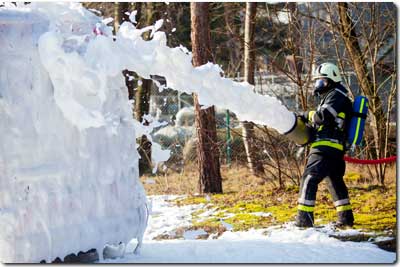
Thanks to these major investments, the company fire brigade's operations are in line as much as possible with the methods and routines of the public fire brigade corps. Due to the nature of the activities on the SCK•CEN site, the company fire brigade specialises in chemical and nuclear risks and technical rescues at both great height and depth. And there is a very good reason for this - the research centre has an underground laboratory situated at a depth of 225 metres.
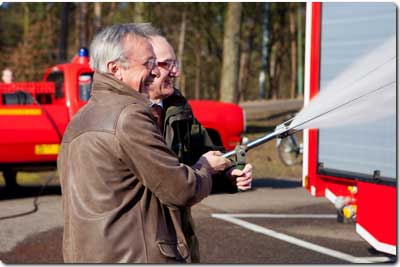
SCK-CEN is also surrounded by 335 hectares of forests. On the recommendation of the fire brigade of Mol, SCK•CEN has made major efforts to strengthen its fire fighting capacity in the forests. Additional roads and bridges were built to increase accessibility, and 6 water pits were drilled to guarantee the water supply. Recently, two special quays were also built to allow fire engines to quickly pump up large quantities of water from the Bocholt-Herentals canal. SCK•CEN will test the new infrastructure in the near future during exercises that will incorporate staff at both Mol and Geel.
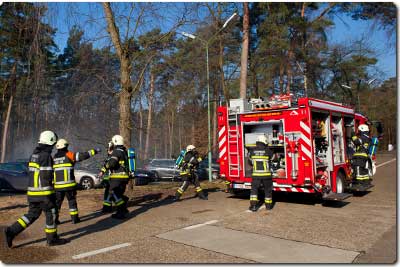
This collaboration will also be strengthened in another way. Only recently, a joint action plan was developed for managing a number of specific scenarios, including a large kerosene fire. This was done is in answer to an important recommendation from the Belgian Federal Agency for Nuclear Control (FANC) within the context of the stress tests that SCK•CEN had to complete.
http://www.euronuclear.org/e-news/e-news-44/l-3.htm

MONTREAL, January 9, 2014 – L-3 MAPPS announced today that it has signed a contract with Guangdong Nuclear Power Joint Venture Co., Ltd. (GNPJVC) to replace the input/output (I/O) system on the Daya Bay Nuclear Power Station full scope simulator’s main control room panels and related remote shutdown panels. The project will start immediately and the replacement I/O system is slated to be in service in the fourth quarter of 2014.
“Having already upgraded the platform and plant models on the Daya Bay simulator, we are especially pleased that GNPJVC will further benefit from our compact I/O solution,” said Michael Chatlani, vice president of marketing & sales for L-3 MAPPS Power Systems and Simulation. “L-3 MAPPS introduced compact I/O systems for power plant simulator projects more than five years ago, and we have garnered tremendous market acceptance for this capability ever since.”
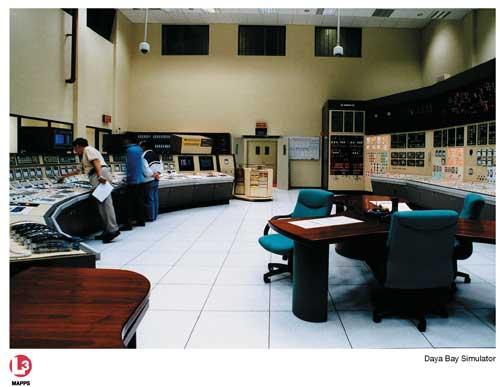
Daya Bay Simulator
“L-3 MAPPS has been a reliable supplier to GNPJVC and the China General Nuclear group since 1999,” said Li Jinguang, head of simulator maintenance at Daya Bay Nuclear Power Operations and Management Co. “The compact I/O system replacement offered by L-3 will ensure that the Daya Bay simulator’s I/O hardware will support our all-important operator training program for the balance of the station’s service life.”
The legacy I/O system was supplied by Thomson-CSF in 1992 and has served GNPJVC well over the years. It will be replaced by L-3 MAPPS using low power consumption compact controllers and I/O modules from Beckhoff Automation that are managed by L-3’s Orchid® Input Output software. In all, more than 13,000 I/O channels will be replaced. L-3 MAPPS will also replace select simulator control room panel instruments with custom-designed equivalents, namely the synchroscope, the rod position indicators and the sound generator.
Guangdong Nuclear Power Joint Venture Co., Ltd. was formed in 1985 and was responsible for the construction of and owns the Guangdong Daya Bay Nuclear Power Station. It was the first large-scale commercial nuclear power plant built with foreign investment, equipment and technology in China. The station, made up of two AREVA pressurized water reactor units of 984 MWe each, is operated by Daya Bay Nuclear Power Operations and Management Co., Ltd. The two units commenced commercial operation on February 1 and May 6, 1994, respectively. Daya Bay produces approximately 14 billion kWh of electricity per year, of which 70 percent is delivered to Hong Kong SAR.
L-3 MAPPS, a division of L-3 Marine & Power Systems, has over 30 years of experience in pioneering technological advances in the marine automation field and over 40 years of experience in delivering high-fidelity power plant simulation to leading utilities worldwide. In addition, the company has more than four decades of expertise in supplying plant computer systems for Canadian heavy water reactors. L-3 MAPPS also provides targeted controls and simulation solutions to the space sector. To learn more about L-3 MAPPS, please visit the company’s website at www.L-3com.com/MAPPS.
Comprising 25 operating companies, L-3 Marine & Power Systems (L-3 M&PS) is a worldwide leader in maritime automation and control, navigation, communications, dynamic positioning, and power distribution and conditioning for the U.S. Navy, allied foreign navies and commercial customers worldwide. L-3 M&PS also produces full-fidelity simulators for increased operator proficiency, resulting in safe operations for leading international utilities and ship operators. With over 85 locations in 19 countries, L-3 M&PS is a cohesive, global partner with extensive capabilities and a proven track record in delivering the highest level of technology, service and integration. To learn more about L-3 Marine & Power Systems, please visit the company’s website at www.L-3com.com/MPS.
Headquartered in New York City, L-3 employs approximately 51,000 people worldwide and is a prime contractor in C3ISR (Command, Control, Communications, Intelligence, Surveillance and Reconnaissance) systems, platform and logistics solutions, and national security solutions. L-3 is also a leading provider of a broad range of electronic systems used on military and commercial platforms. The company reported 2012 sales of $13.1 billion. To learn more about L-3, please visit the company’s website at www.L-3com.com.
Safe Harbor Statement Under the Private Securities Litigation Reform Act of 1995
Except for historical information contained herein, the matters set forth in this news release are forward-looking statements. Statements that are predictive in nature, that depend upon or refer to events or conditions or that include words such as “expects,” “anticipates,” “intends,” “plans,” “believes,” “estimates,” “will,” “could” and similar expressions are forward-looking statements. The forward-looking statements set forth above involve a number of risks and uncertainties that could cause actual results to differ materially from any such statement, including the risks and uncertainties discussed in the company’s Safe Harbor Compliance Statement for Forward-Looking Statements included in the company’s recent filings, including Forms 10-K and 10-Q, with the Securities and Exchange Commission. The forward-looking statements speak only as of the date made, and the company undertakes no obligation to update these forward-looking statements.
# # #
Orchid is a trademark of L-3 Communications MAPPS Inc. All other products are trademarks of their respective companies.
http://www.euronuclear.org/e-news/e-news-44/MYRRHA.htm

On 30 January, VKI and SCK•CEN inaugurated two new unique installations in the presence of State Secretary Philippe Courard; one with which seismic activity is imitated and the other a scale model of the MYRRHA research reactor.
The installations and research of the von Karman Institute (VKI) are renowned worldwide, especially in the context of the environment, turbomachinery and space travel. The researchers, who among other things are making tomorrow’s aircraft engines quieter and ‘greener’ or are optimising the architecture of our cities in order to reduce air and environmental pollution, are now contributing to MYRRHA as well.
In 2011, a joint venture agreement was signed between SCK•CEN and VKI, which was given the name DEMOCRITOS (Demonstration of Myrrha Operation and CRITical Objects for Safety). The joint venture is concentrating on a number of the research reactor’s critical components. VKI’s knowledge in thermohydraulics, specific measuring techniques and designing circulating pumps is of significant benefit to the MYRRHA project.
“In order to develop and design MYRRHA, we can count on the knowledge of the best researchers and engineers in the world”, endorsed Hamid Aït Abderrahim, Director of the MYRRHA project and SCK•CEN Deputy Director General. “Sometimes you need not look far to find the ideal partner. The fruitful collaboration with VKI is testimony to the value and strength of Belgian research centres.”
The two installations, which VKI built within the framework of the DEMOCRITOS project, were named SHAKESPEARE and MYRRHABelle. They are of great value for optimising the design of the MYRRHA reactor. They will also provide a scientific answer to the questions of the Federal Agency for Nuclear Control (FANC) with regard to the safety.
The three-dimensional vibrating table, SHAKESPEARE, enables seismic activity to be simulated. For instance, it is possible to study the effect of an earthquake on a scale model of MYRRHA and the internal coolant. Such a study is crucially important in preventing fluid movements damaging the reactor vessel or the reactor’s other components.
MyrrhaBelle is a 1/5 scale model of the MYRRHA reactor part, including all such essential elements as the reactor core, heat exchanger and circulating pumps. Water is used in this installation to visualise and study the coolant flows. If the coolant does not flow optimally, it could damage the reactor’s components.
“Twelve researchers, science graduates and post-graduates at VKI have been working on the DEMOCRITOS project for three years. BELSPO has freed a budget of 3.5 million euros for financing this. Thanks to innovative research infrastructures such as MYRRHA, a new generation of scientists is being trained in Belgium”, explains Philippe Courard, State Secretary responsible for science policy.
The collaboration between the two institutions is set to end on a high in 2014. SCK•CEN and VKI wish to continue the research and to explore certain specific subjects in greater depth. One of the first objectives of the DEMOCRITOS II research project could be to move from the circulating pump now elaborated on paper to having it function in reality by means of an initial prototype.
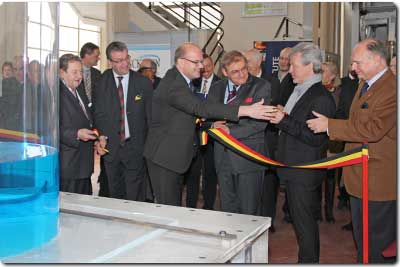
Photo: from left to right:
Jean-Pierre Contzen, VKI chairman
Hamid Aït Abderrahim, MYRRHA director (SCK•CEN)
Philippe Courard, State Secretary for science
Jean Muylaert, VKI director
Philippe Mettens, federal science policy director
Derrick Gosselin, SCK•CEN chairman
http://www.euronuclear.org/e-news/e-news-44/AiNT.htm

From 23 – 25 June 2014, the Aachen Institute for Nuclear Training (AiNT) will be organizing, in Düsseldorf, the 2nd Nuclear Disposal Symposium. The event is a dialogue between experts organised to discuss the selection of a site for a geological repository to store heat-generating radioactive waste in Germany.
The main issue under discussion during the symposium will be the content and consequences of the new legal framework in Germany based on the political decisions that were taken last year. The topics covered include scientific exploration, site characterization, social acceptance and the duration of the process.
For further information and registration, please visit: www.nuclear-training.de
![]()
Image 1: ICOND 2013 in Aachen, Germany
The ICOND 2014 conference will take place from 28 - 30 October 2014, in Essen. In addition, on 27 October 2014 a Pre-Conference-Workshop will take place to introduce and discuss the current status and legal framework with regards to the decommissioning of German nuclear power plants. All German nuclear power plants will be shut down to by 2022.
The conference will focus on various decommissioning strategies as well as on project management. Participants in ICOND will include decision-makers, key personnel, management from electricity suppliers and managing directors of companies active in the nuclear sector. National and international speakers will also present their best practices, solutions and strategies.
For further information about ICOND 2014 and to review what happened at ICOND 2013, please visit: www.icond.de/
![]()
Image 2: ICOND 2012 in Cologne
http://www.euronuclear.org/e-news/e-news-44/atomexpo.htm


ATOMEXPO International Forum will be held on June 9–11, 2014 in Moscow.
The Forum will include an international specialized exhibition and congress to be attended by the representatives of international governmental and non-profit organizations, Russian and foreign companies; as well as leading nuclear industry experts.

The main objective of the Forum is to provide a venue for international nuclear power and processing industry leaders to openly discuss and identify the place and role of nuclear energy in the 21st century energy mix; study key challenges and problems faced; as well as assess world energy market development scenarios.
In just a few years the Forum has become one of the major events where most topical issues of the nuclear energy sector are discussed, and the sector’s development trends are shaped. In 2013, the Exhibition attracted more than 2,000 guests, and over 800 delegates from 42 countries all over the world participated in the Congress. ATOMEXPO Forum is a unique opportunity to showcase your organization’s success.
We invite your organization to take a stand at the Exhibition and become involved in the work of the Congress. To participate in the Forum, please submit a filled-in Contract/Application Form to the Organizing Board.
 |
 |
 Read more about ATOMEXPO 2014 Forum at: http://2014.atomexpo.ru/enIf you have any questions, please do not hesitate to contact the Forum’s Organizing Board:Тел.: +7 495 663 38 21, Fax: +7 495 663 38 20 atomexpo@atomexpo.com Forum Director: Galina Lashmanova Congress Manager: Natalia Savich |
|
http://www.euronuclear.org/e-news/e-news-44/other-conferences.htm

18 - 23 May 2014
Aix-en-Provence, France
more

29 - 30 May 2014
Kaunas, Lithuania
more
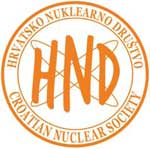
1- 4 June 2014
Zadar, Croatia
more

2nd International Symposium on Cement-based Materials for Nuclear Wastes
3 - 6 June 2014
Avignon, Popes’ Palace, France
more

9 - 11 June 2014
Moscow, Russia
more
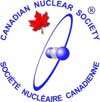
24 - 28 August 2014
Vancouver, Canada
more

1 - 4 September 2014
Paris, France
more

10 - 12 September 2014
London, United Kingdom
more

14 - 17 September 2014
Sendai, Japan
more

Contribution of Materials Investigations and Operating Experience to LWRs’ Safety, Performance and Reliability
14 - 18 September 2014
Avignon, Popes’ Palace, France
more

23 - 26 September 2014
Chiflica Palace Resort and Spa, Bulgaria
more
![]()
28 September - 3 October 2014
Kyoto, Japan
more
![]()
26 - 31 October 2014
Sapporo, Japan
more
http://www.euronuclear.org/e-news/e-news-44/Member-Societies.htm

| Austrian
Nuclear Society http://www.oektg.at |
Belgian
Nuclear Society http://www.bnsorg.be |
| Bulgarian
Nuclear Society http://www.bgns.bg |
Croatian
Nuclear Society http://www.nuklearno-drustvo.hr |
| Czech Nuclear Society http://www.csvts.cz/cns |
Finnish
Nuclear Society http://www.ats-fns.fi |
| French
Nuclear Energy Society (SFEN) http://www.sfen.org |
German
Nuclear Society (KTG) http://www.ktg.org |
| Hungarian
Nuclear Society http://www.nuklearis.hu |
The
Israel Nuclear Society E-mail: meins@tx.technion.ac.il |
| Italian
Nuclear Association http://www.assonucleare.it E-mailt: info@assonucleare.it |
Lithuanian
Nuclear Energy Association http://www.lbea.lt |
| Netherlands Nuclear Society http://www.kerntechniek.nl |
The Nuclear Institute http://www.nuclearinst.com |
| Nuclear
Society of Russia E-mail: agagarin@kiae.ru membership on hold |
Nuclear
Society of Serbia http://nss.vin.bg.ac.yu/ |
| Nuclear
Society of Slovenia http://www.djs.si/ |
Polish
Nuclear Society http://www.nuclear.pl |
| Romanian
Nuclear Energy Association (AREN) http://www.aren.ro |
Slovak
Nuclear Society http://www.snus.sk |
| Spanish
Nuclear Society http://www.sne.es |
Swedish
Nuclear Society http://www.karnteknik.se |
| Swiss
Nuclear Society http://www.sns-online.ch |
http://www.euronuclear.org/e-news/e-news-44/Corporate-Members.htm
Links to ENS Corporate Members |
| Aachen Institute for Nuclear Training GmbH link |
AF-Colenco Ltd., Nuclear Technology
Department link |
| Alpiq Ltd link |
Alpiq Suisse Ltd. link |
| Andritz AG link |
Ansaldo Nucleare S.p.A link |
| AREVA NP GmbH E-mail: unternehmenskommunikation @areva.com link |
Atomic Energy Council (AEC) link |
| Atomic Energy of Canada Limited (AECL) link |
Atomexpo LLC link |
| Atomtex SPE link |
Axpo AG link |
| BKW FMB Energie AG link |
Chilean Nuclear Energy Commisssion link |
| Electrabel, Generation Department link |
NV Elektriciteits-Produktiemaatschappij
Zuid-Nederland EPZ link |
| Electricité de France (EDF), Communication Division link |
Euro Nuclear Services BV E-mail: ens@unitech.ws link |
| E.O.N Kernkraft GmbH link |
ENUSA Industrias Avanzadas SA link |
| EXCEL Services Corporation link |
GE Nuclear Energy peter.wells@gene.ge.com |
| IEA of Japan Co. Ltd link |
Kernkraftwerk Gösgen-Däniken
AG link |
| Kernkraftwerk Leibstadt AG (KKL), link |
L-3 Communications MAPPS Inc. link |
| Linn High Therm GmbH link |
Elektroinstitut Milan Vidmar E-mail: mladen.iglic@eimv.si |
| NRG Arnhem link |
NRG Petten link |
| NUKEM Technologies GmbH link |
ONET TECHNOLOGIES link |
| MVM Paks Nuclear Power Plant Ltd link |
Paul Scherrer Institute link |
| Polimaster Ltd link |
Saphymo GmbH link and link |
| Siempelkamp Nukleartechnik
GmbH E-mail: wolfgang.steinwarz@ siempelkamp.com link |
SKB (Swedish Nuclear Fuel and Waste Management
Company) E-mail: info@skb.se link |
| Studiecentrum voor Kernenergie, Centre d’Etude
de l’Energie Nucléaire SCK/CEN link |
Synatom E-mail: mailmaster@synatom.com |
| Taiwan Power Company (Taipower) link |
Taiwan Atomic Energy Council (AEC) link |
| Teollisuuden Voima Oyj / Industrial Power
Company Ltd (TVO) link |
Tractebel Engineering S. A. link |
| UNESA E-mail: nuclear@unesa.es link |
Urenco Limited link |
| Vattenfall AB link |
VNS – Vinçotte Nuclear Safety link |
| VTT Nuclear link |
Westinghouse Electric Company link |
| World Association of Nuclear Operators
(WANO), link |
http://www.euronuclear.org/e-news/e-news-44/editorial.htm

Editorial Staff:
Mark O’Donovan, Editor-in-Chief
Contributors to this Issue:
Noel Carmarcat (ENS)
Kirsten Epskamp (ENS)
Tereza Melicherová (Slovak Nucleare Society)
Mark O’Donovan (ENS)
Realisation:
Marion Brünglinghaus
Avenue des Arts 56, BE-1000 Brussels
Phone +32 2 505 30 50 - Fax: +32 2 502 39 02
E-mail: info@euronuclear.org - http://www.euronuclear.org
The ENS News is a quarterly publication, in electronic
form only.
Copyright notice ©2014 European Nuclear Society.
Reproduction is authorised provided that the ENS News is acknowledged as the
source – except where otherwise stated.
![]()
© European Nuclear Society, 2014